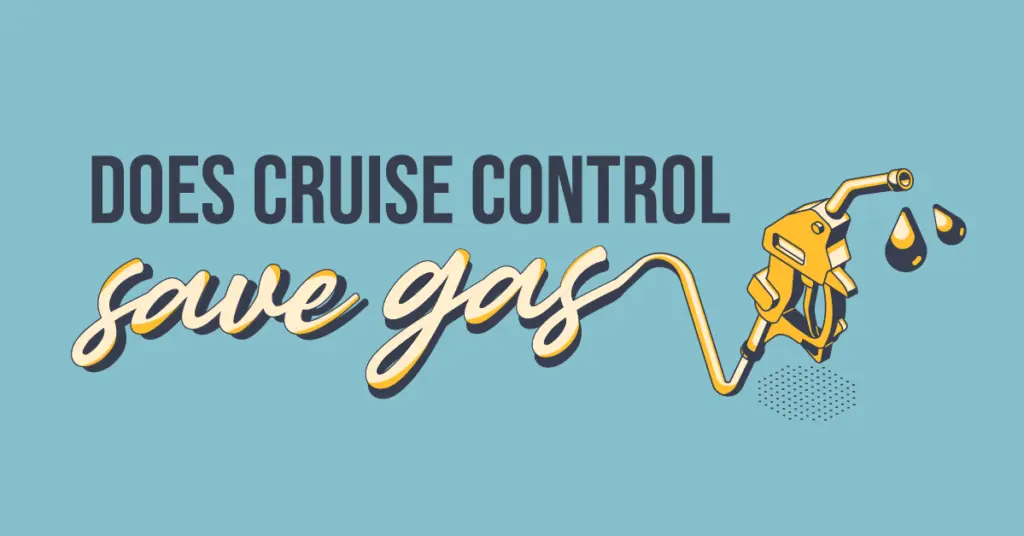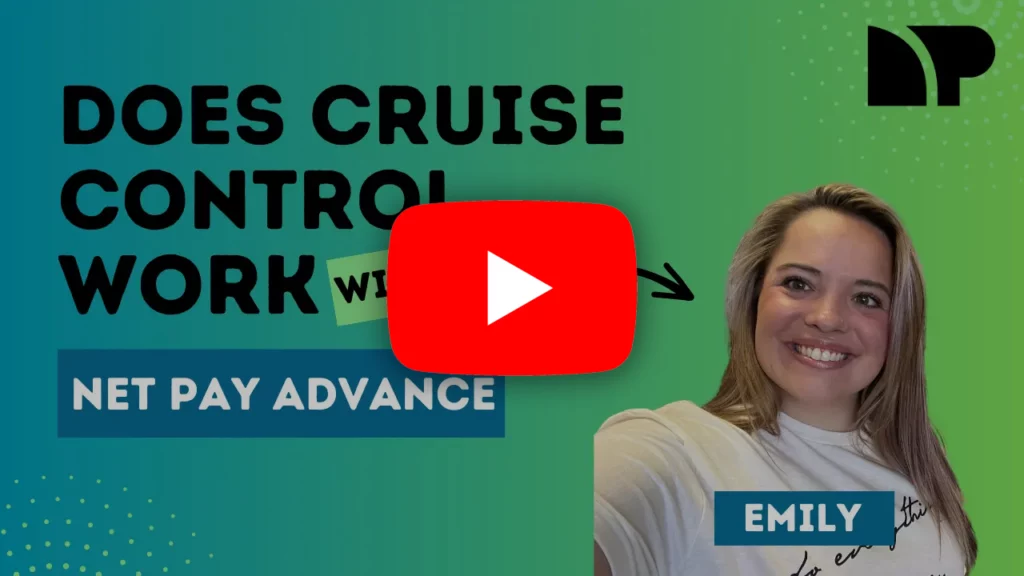Yes, it does! However, there are conditions that apply.
It could be pure curiosity that makes you wonder if cruise control could save gas. Or you might be looking for ways to cut corners with fuel prices soaring as high as they are. Either way, we’re here to offer answers to the question – Does cruise control save gas?
If you drive on a regular or semi-regular basis, or even at all, you’re likely to consider fuel costs in your budget. People that commute to and from work tend to use more gas than those working remotely. The same goes for those who live in busy areas with a lot of traffic.
There are some people who take advantage of public transport daily. Although they don’t have to set aside money for gas, they do set aside an amount for their metro card or bus pass.
Driving offers a lot of convenience and flexibility when it comes to getting from one place to another. It is estimated that 89% of all American adults have a driver’s license. This shows that a large majority of the population happen to drive and are likely to be affected by fuel costs. That is why it is only natural for people to look for ways and means to save on gas.
In this article we cover everything from cruise control benefits, to saving money at the gas station. Here’s an overview of what we’ll cover in this article. Be sure to keep reading though, as we have six additional gas saving tips not shown in this graphic! Plus, don’t miss out on our video where our team shares even more tips!
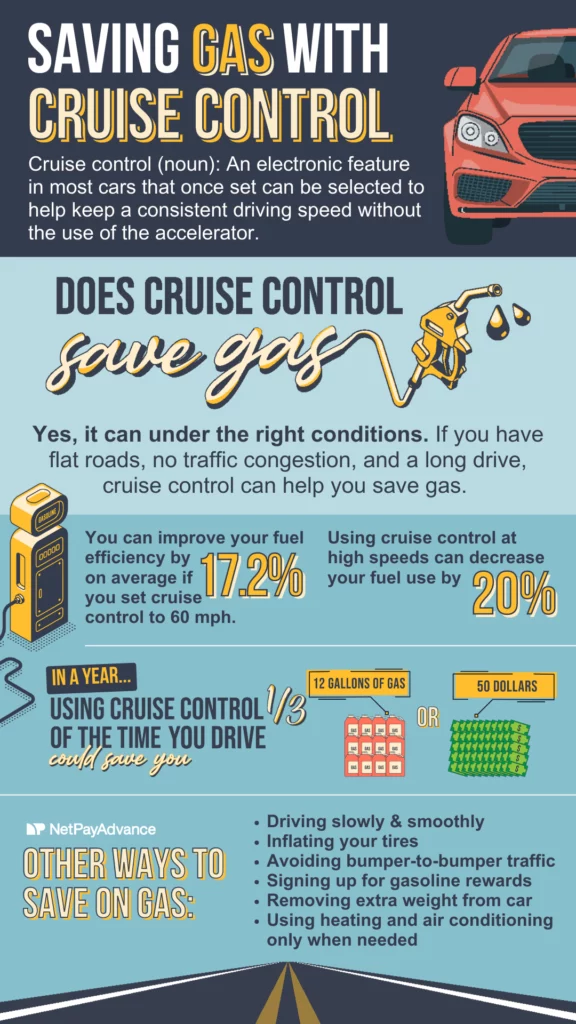
What is cruise control?
Cruise control is a feature that allows drivers to automatically maintain constant speed without needing to use the accelerator pedal of the car. It is designed to provide a more relaxed and comfortable driving experience, especially during long drives.
When cruise control is activated, the driver sets the desired speed using the vehicle’s controls, usually located on the steering wheel or dashboard. The cruise control system then takes over and automatically adjusts the throttle to keep the vehicle traveling at the specified speed. If the driver wants to accelerate or decelerate, they can typically override the cruise control by canceling it, pressing the brake, or pressing the gas pedal.
Cruise control was invented in 1948 by Ralph Teetor. On a road trip with his lawyer, Teetor observed that his companion was in a constant cycle of speeding and slowing. He was so annoyed by this that he started to work on a device to maintain a constant speed. This is what necessitated the need for a system that would bring some relief to drivers.
These days, cruise control is standard in cars. The global cruise control market is projected to hit $15.3 billion this year.
Does cruise control save gas? Keep reading to find out!
What are the benefits of cruise control?
The main benefits of cruise control are:
1. Enhances fuel efficiency or mileage
Cruise control regulates fuel consumption by enabling vehicles to maintain constant speed. This is more effective than manually accelerating and decelerating. It is claimed that using cruise control can lower your annual gas expenses by 10%.
2. Drivers are less likely to speed and get pulled over
Let’s face it, some of us love speed. As dangerous as it might be, it is not unusual for drivers to speed frequently. In fact, 112,00 speeding tickets are issued every single day. By travelling at constant speed, you’re less likely to go above the speed limit as there’s no need for manual speed control when using cruise control.
3. Reduces fatigue experienced by drivers when driving long distances
Driving can be strenuous, especially if it involves long distances. Cruise control eliminates the need to press and release the gas pedal which may not sound like a lot, but it does add up when driving for longer hours.
4. Higher comfort and ease for drivers
Cruise control makes driving easy and comfortable for drivers as they can focus on the road and other elements of driving instead of constantly keeping a foot on the gas pedal.
5. Decreases carbon emissions and saves gas!
As discussed earlier, cruise control improves fuel efficiency by maintaining a constant speed. This means, it lowers fuel consumption which in turn reduces the amount of carbon released into the atmosphere. Using control contributes towards reducing your carbon footprint and fosters sustainability.
Does cruise control save gas?
The answer is, yes! Cruise control does help save gas.
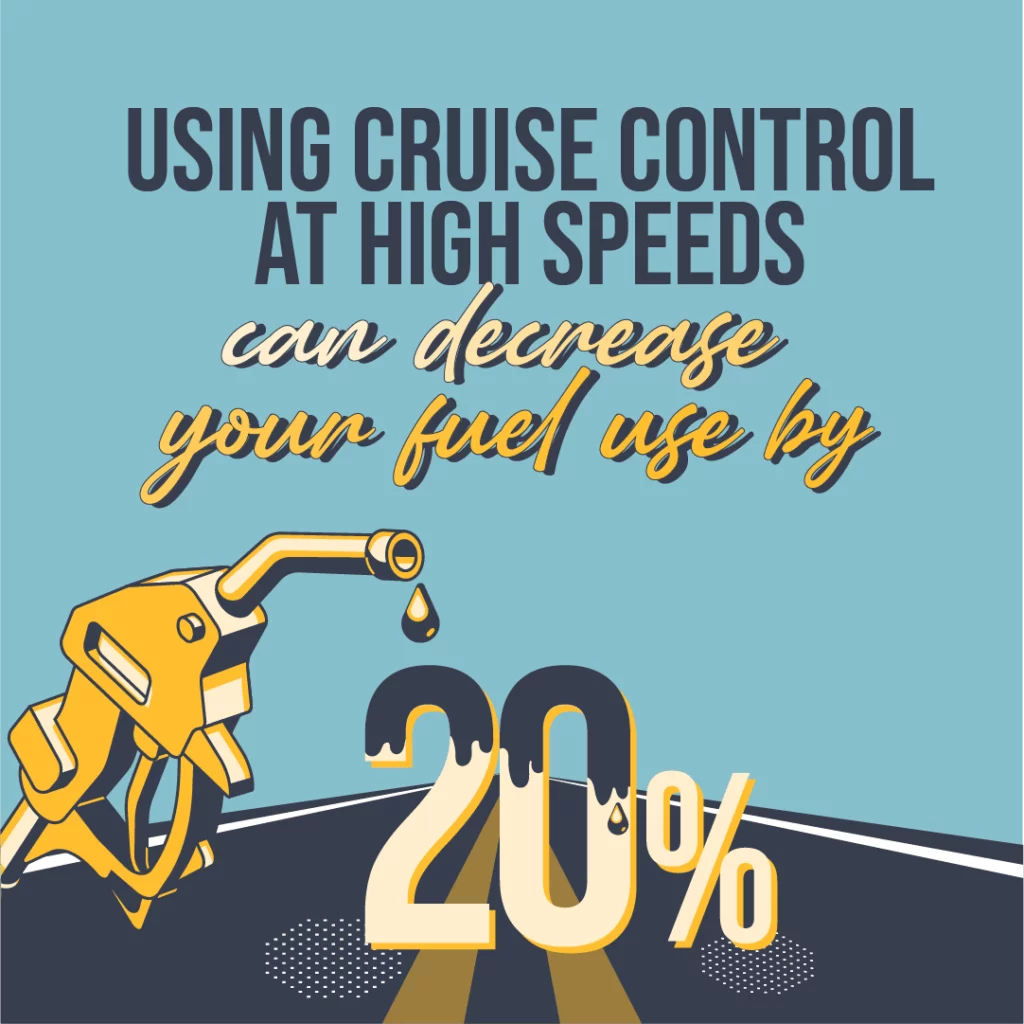
This is especially true if you have:
- Flat roads
- No traffic congestion
- Longer drives
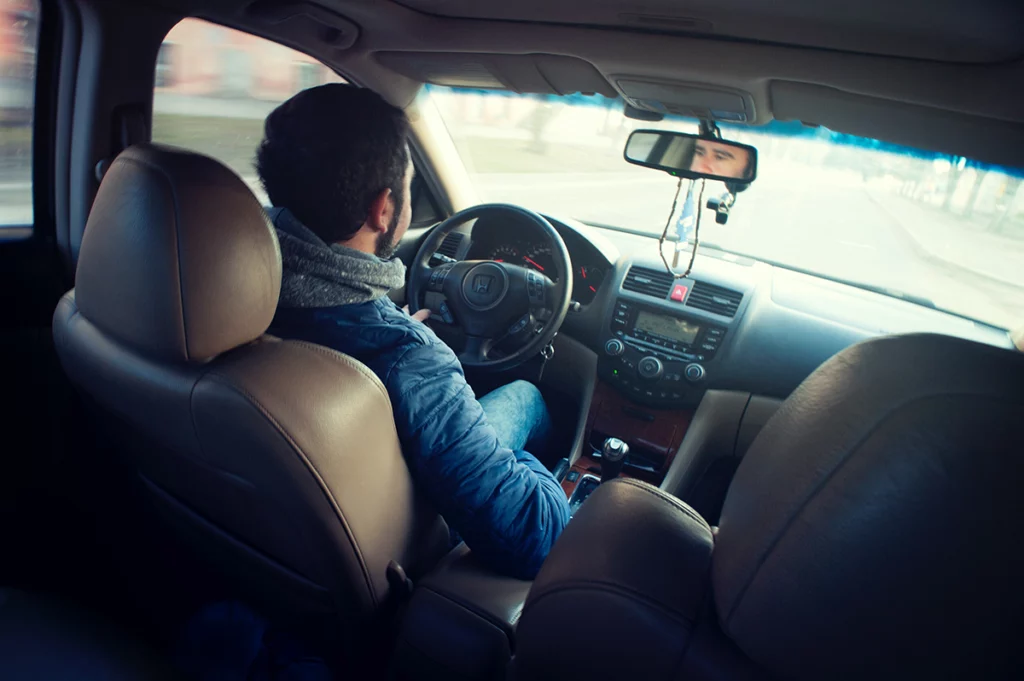
When you use cruise control, you maintain a steady speed. This helps you be more fuel-efficient because manual acceleration and deceleration requires more fuel. You no longer have to use the accelerator. Did you know that the US Department of Energy encourages drivers to use cruise control?
How much can you save using cruise control?
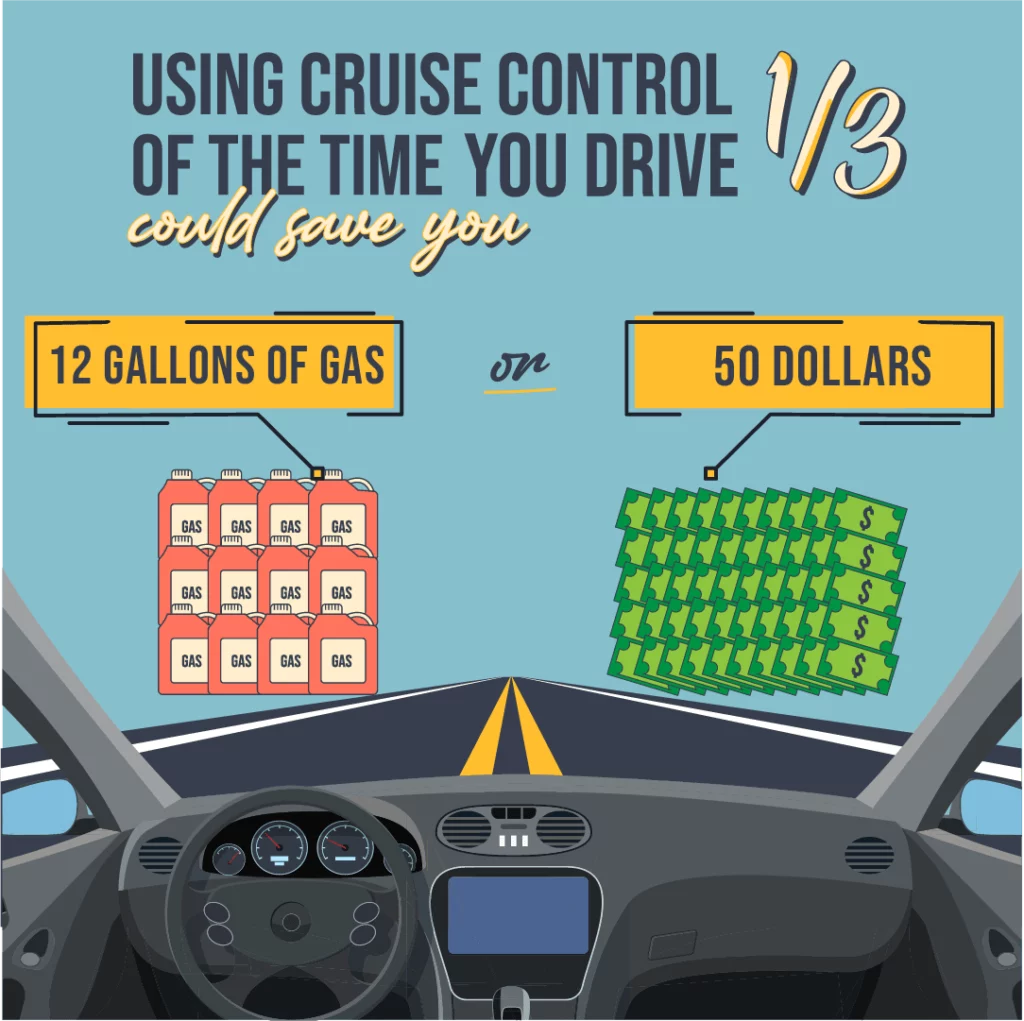
Additionally, cruise control can lower your fuel consumption by 20% when at a higher speed. This could save you at least one or two miles per gallon!
On average, Americans drive 14,263 miles a year. This accounts for a whole lot of driving and subsequent fuel costs!
If you consider the average gas price being $4.23 per gallon, using cruise control 1/3rd of your driving time could save you 12 gallons or $50 a year! So why speed when you can just cruise?
When should you NOT use cruise control?
Despite its advantages, there are situations where using cruise control is not recommended. They are:
- Driving in hilly or mountain terrains
- In heavy traffic where you’ll need to adjust the speed frequently
- On winding roads
- Through weather conditions like hail, heavy rain, or snow
- On icy or wet roads
- When the driver is tired or drowsy
Please note that cruise control comes with risks. At the end of the day, you are still the driver operating heavy machinery. Cruise control is not autopilot; it only helps maintain consistent speed. Steady speed does not eliminate dangers of the road or climate conditions. Plus, cruise control won’t likely save you gas or money in these specific conditions.
What speed should you use cruise control?
There is a little debate about it, but most experts agree that the recommended speed range to use cruise control is 55 to 70 miles/hour. The optimal speed to reduce fuel emissions, and thus costs, is within this range. This speed allows the driver to save on gas and ensure that your vehicle runs efficiently.
Of course, when using cruise control, it’s important to follow the speed limit of the road you’re driving on. We suggest reaching a safe speed before using cruise control.
Is cruise control bad for your car?
No, cruise control is not bad for your car. Cruise control is actually beneficial as it sets a constant speed and reduces the amount of manual acceleration and deceleration which adds to wear and tear.
How to save on gas
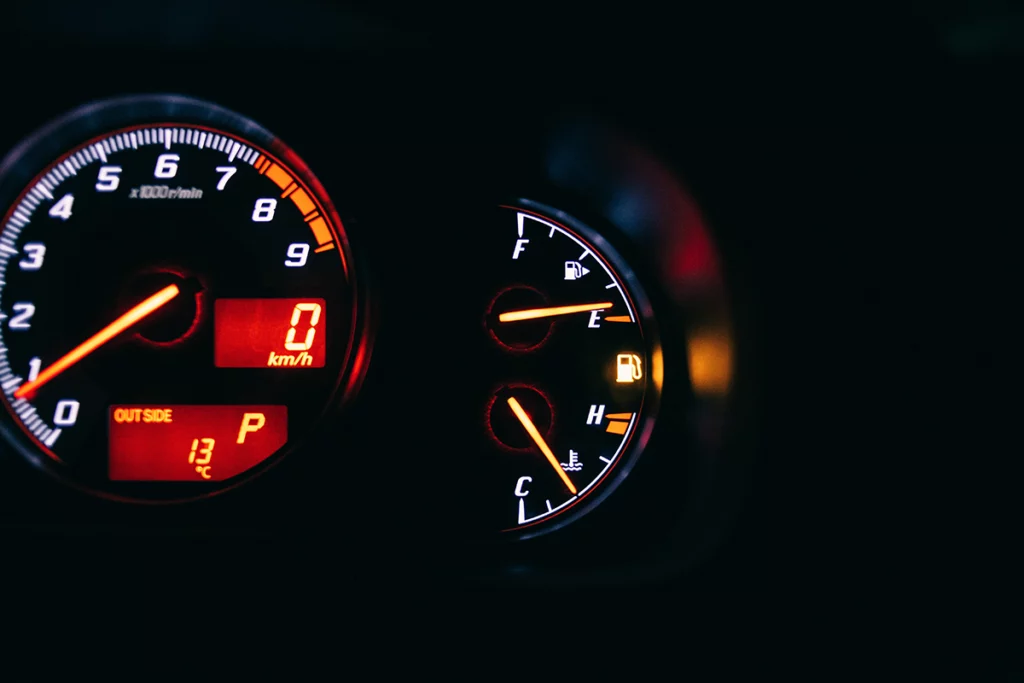
It’s obvious that gas prices have skyrocketed in the early part of 2022. Some places were reporting prices as high as $7/gallon! Filling up a car once could easily be an $84 investment. Finding ways to easily save on gas is a modern-day problem with modern-day solutions.
What are some ways to save on gas?
Have you wondered if there are other ways to save on gas? The good news is that there are! Some other ways to save on gas are:
- Driving smoothly and at a lower speed
- Inflating your tires
- Switching to “eco mode” if available
- Avoiding high traffic if possible
- Turning off your car when stalled in traffic
- Getting regular maintenance
- Removing extra weight from your car
- Using heating and AC only when necessary
- Planning your routes when running errands
- Carpooling to split the costs
- Signing up for a gasoline rewards program
- Choosing regular-grade fuel over premium option.
In addition to gas costs, auto repairs can consume a major chunk of your paycheck. Discover how you can keep that in check with our resource: Am I Spending Too Much on Auto Repairs?
Real numbers from real people
People everywhere are feeling the effects of gas price hikes. Through this year, many people have been going to Google to look into gas prices.
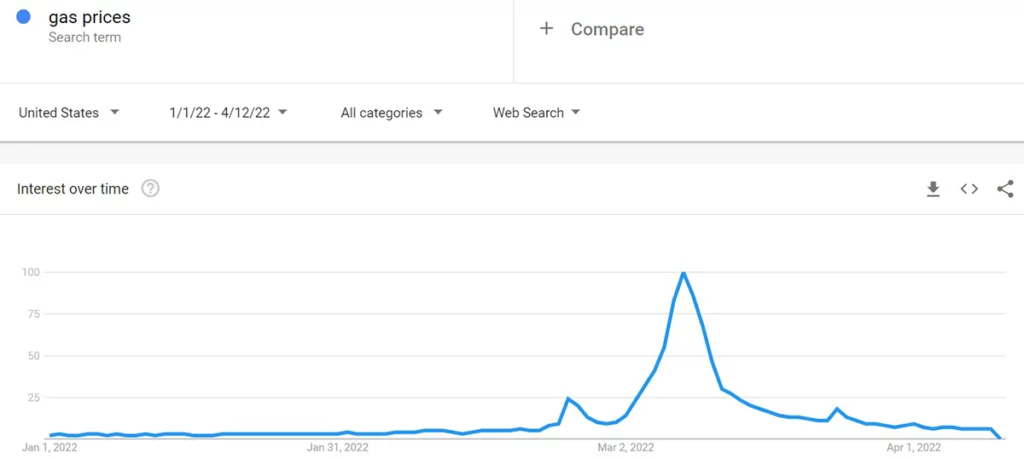
Even our team is experiencing it.
In our recent video, we talk about using cruise control and other ways to save on gas. Watch it here.
In the graphic below, we have compiled a list of fuel expenses incurred by members of our team. This list will give you some insight into how much people are spending on gas. Every individual is unique and has a unique lifestyle. Some exclusively work from home or have spouses that do so. Others carpool to work. There are some who made the big shift to an electric vehicle which eliminated fuel costs altogether. Let’s take a look!
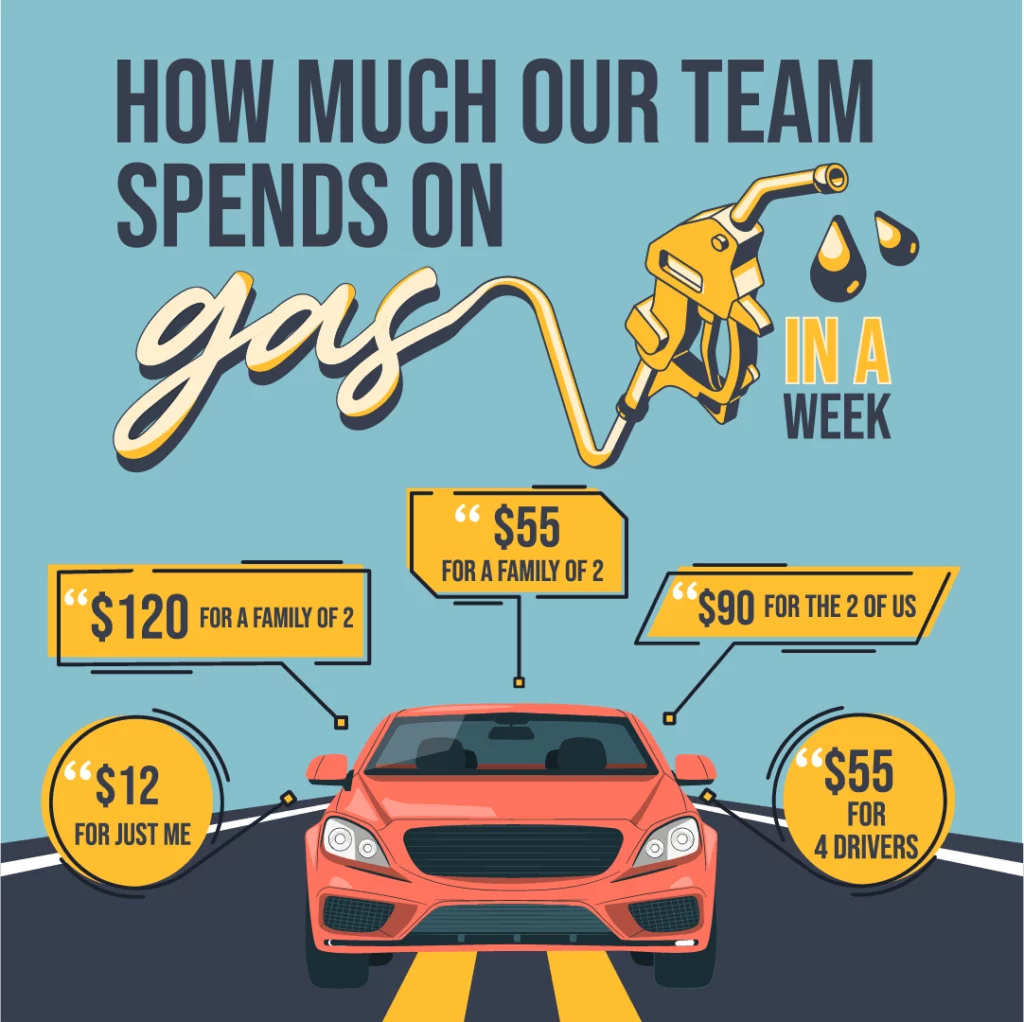
Is it time to get an electric car?
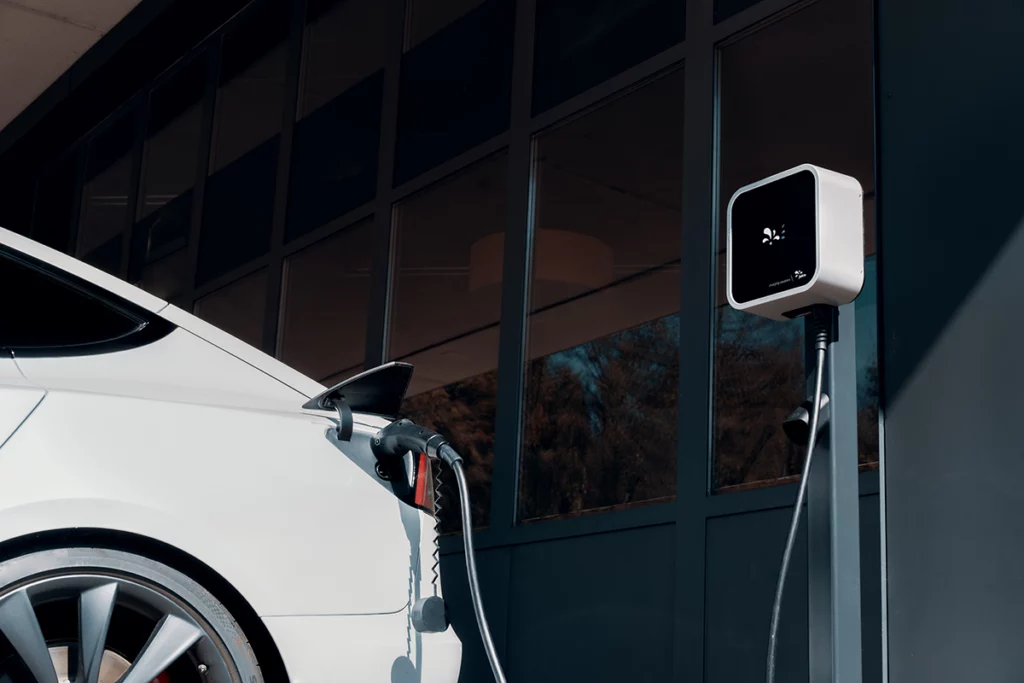
Many of us have toyed with the idea of getting a fully electric car or even a hybrid model in recent times. In theory, it does sound like the greatest solution ever in the face of rising fuel costs. However, in practicality, there are factors to consider before making a decision. They are:
- Most electric vehicles are expensive and involve hefty monthly payments
- Charging stations aren’t as common as gas stations, which could hamper road trips.
- It takes time to charge up an electric car even at the tesla superchargers.
- Charging at home is the cheapest option but it is extremely time-consuming.
- The maximum range is about 300 miles before you need to charge.
- Since they’re relatively new, it could be tricky to find experienced auto mechanics if needed.
Why you should consider getting an electric car
If the above factors don’t seem to be major roadblocks, getting an electric vehicle might be the way to go. There are some obvious advantages to going electric such as:
- Never paying for gas again
- Never needing oil changes
- Charging at home for a fraction of what gas costs
- Being eco-friendly
- Experiencing superior driving
- Parking free in many places
- Not contributing to noise pollution
- Qualifying for federal tax credit
Conclusion
Americans have been affected by the hike in fuel costs in the last few years. We are dealing with inflation while recovering from a global pandemic. Under these circumstances, we are always looking for ways to cut down on expenses. At Net Pay Advance, our focus is to help bring awareness to people regarding money and finances. Check out our personal finance blog for tips on adopting a financial-friendly lifestyle and more.
Times can get rough and we’re there for you if you ever need financial assistance. Check out our money saving tips blog for more ways to save. Or, contact us if you need a payday advance online or a short-term loan.
